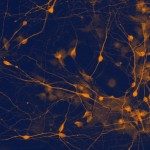Link to Pubmed [PMID] – 9130720
EMBO J. 1997 Apr;16(7):1759-71
Pre-mRNA splicing is a stepwise nuclear process involving intron recognition and the assembly of the spliceosome followed by intron excision. We previously developed a pre-mRNA export assay that allows the discrimination between early steps of spliceosome formation and splicing per se. Here we present evidence that these two assays detect different biochemical defects for point mutations. Mutations at the 5′ splice site lead to pre-mRNA export, whereas 3′ splice site mutations do not. A genetic screen applied to mutants in the branch site region shows that all positions in the conserved TACTAAC sequence are important for intron recognition. An exhaustive analysis of pre-mRNA export and splicing defects of these mutants shows that the in vivo recognition of the branch site region does not involve the base pairing of U2 snRNA with the pre-mRNA. In addition, the nucleotide preceding the conserved TACTAAC sequence contributes to the recognition process. We show that a T residue at this position allows for optimal intron recognition and that in natural introns, this nucleotide is also used preferentially. Moreover, the Mud2 protein is involved in the recognition of this nucleotide, thus establishing a role for this factor in the in vivo splicing pathway.

